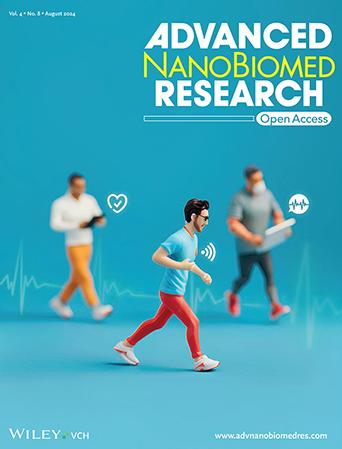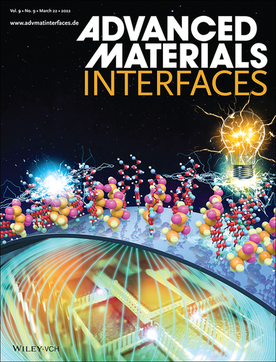开发用于运动时心电图监测的柔性可穿戴电极的最新进展
IF 4.4
Q2 ENGINEERING, BIOMEDICAL
引用次数: 0
摘要
柔性可穿戴心电图设备 在第 2300169 号文章中,Woon-Hong Yeo 及其合作者讨论了柔性可穿戴心电图设备的主要特性和要求,这些设备可用于运动等动态运动中心脏功能障碍的早期诊断。本文章由计算机程序翻译,如有差异,请以英文原文为准。


Recent Progress in the Development of Flexible Wearable Electrodes for Electrocardiogram Monitoring During Exercise
Flexible Wearable Electrocardiogram Devices
In article 2300169, Woon-Hong Yeo and co-workers discuss the key properties and requirements of flexible wearable electrocardiogram devices for early diagnosis of heart dysfunction during dynamic motions, including exercise.
求助全文
通过发布文献求助,成功后即可免费获取论文全文。
去求助
来源期刊

Advanced Nanobiomed Research
nanomedicine, bioengineering and biomaterials-
CiteScore
5.00
自引率
5.90%
发文量
87
审稿时长
21 weeks
期刊介绍:
Advanced NanoBiomed Research will provide an Open Access home for cutting-edge nanomedicine, bioengineering and biomaterials research aimed at improving human health. The journal will capture a broad spectrum of research from increasingly multi- and interdisciplinary fields of the traditional areas of biomedicine, bioengineering and health-related materials science as well as precision and personalized medicine, drug delivery, and artificial intelligence-driven health science.
The scope of Advanced NanoBiomed Research will cover the following key subject areas:
▪ Nanomedicine and nanotechnology, with applications in drug and gene delivery, diagnostics, theranostics, photothermal and photodynamic therapy and multimodal imaging.
▪ Biomaterials, including hydrogels, 2D materials, biopolymers, composites, biodegradable materials, biohybrids and biomimetics (such as artificial cells, exosomes and extracellular vesicles), as well as all organic and inorganic materials for biomedical applications.
▪ Biointerfaces, such as anti-microbial surfaces and coatings, as well as interfaces for cellular engineering, immunoengineering and 3D cell culture.
▪ Biofabrication including (bio)inks and technologies, towards generation of functional tissues and organs.
▪ Tissue engineering and regenerative medicine, including scaffolds and scaffold-free approaches, for bone, ligament, muscle, skin, neural, cardiac tissue engineering and tissue vascularization.
▪ Devices for healthcare applications, disease modelling and treatment, such as diagnostics, lab-on-a-chip, organs-on-a-chip, bioMEMS, bioelectronics, wearables, actuators, soft robotics, and intelligent drug delivery systems.
with a strong focus on applications of these fields, from bench-to-bedside, for treatment of all diseases and disorders, such as infectious, autoimmune, cardiovascular and metabolic diseases, neurological disorders and cancer; including pharmacology and toxicology studies.
 求助内容:
求助内容: 应助结果提醒方式:
应助结果提醒方式:


